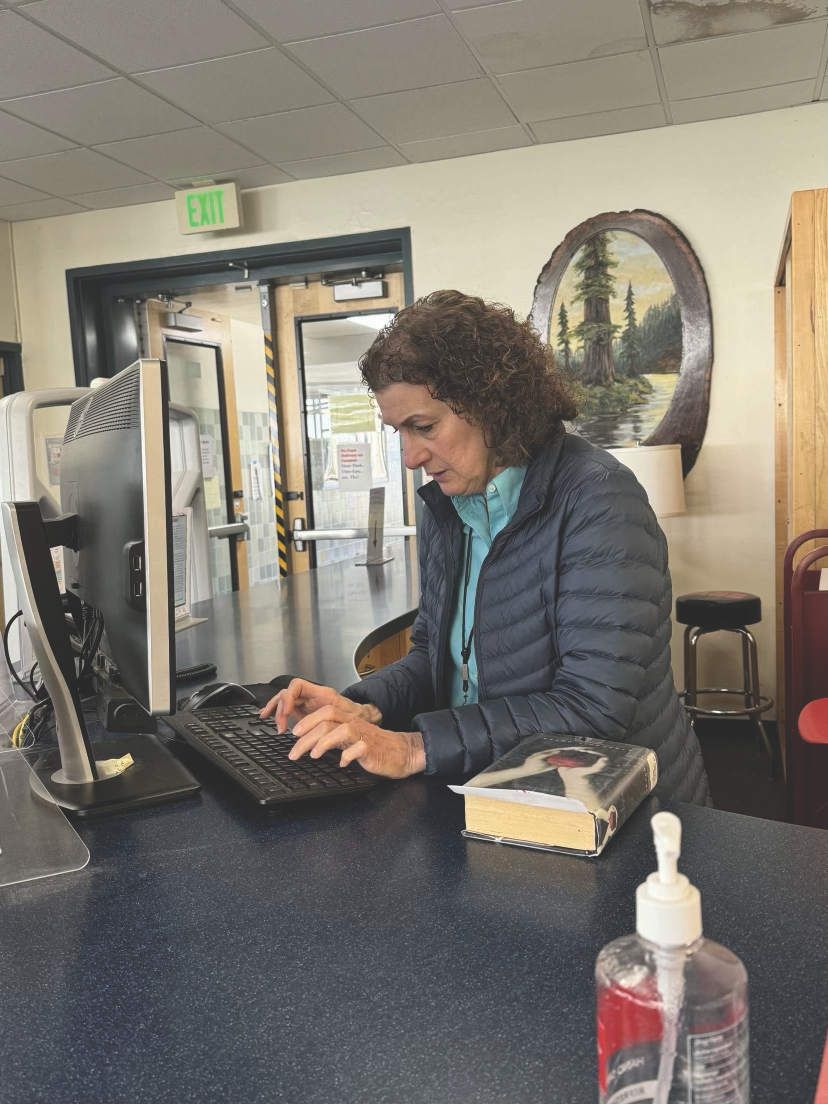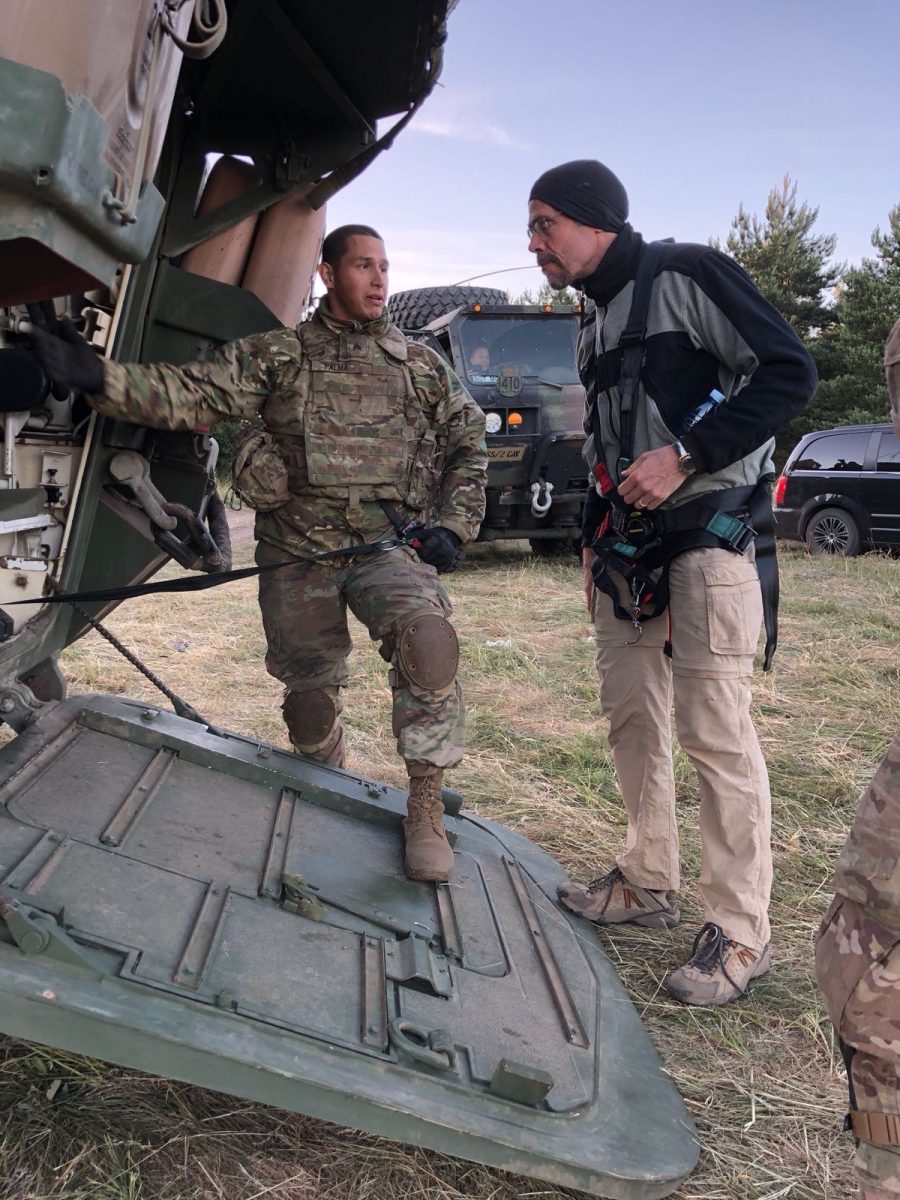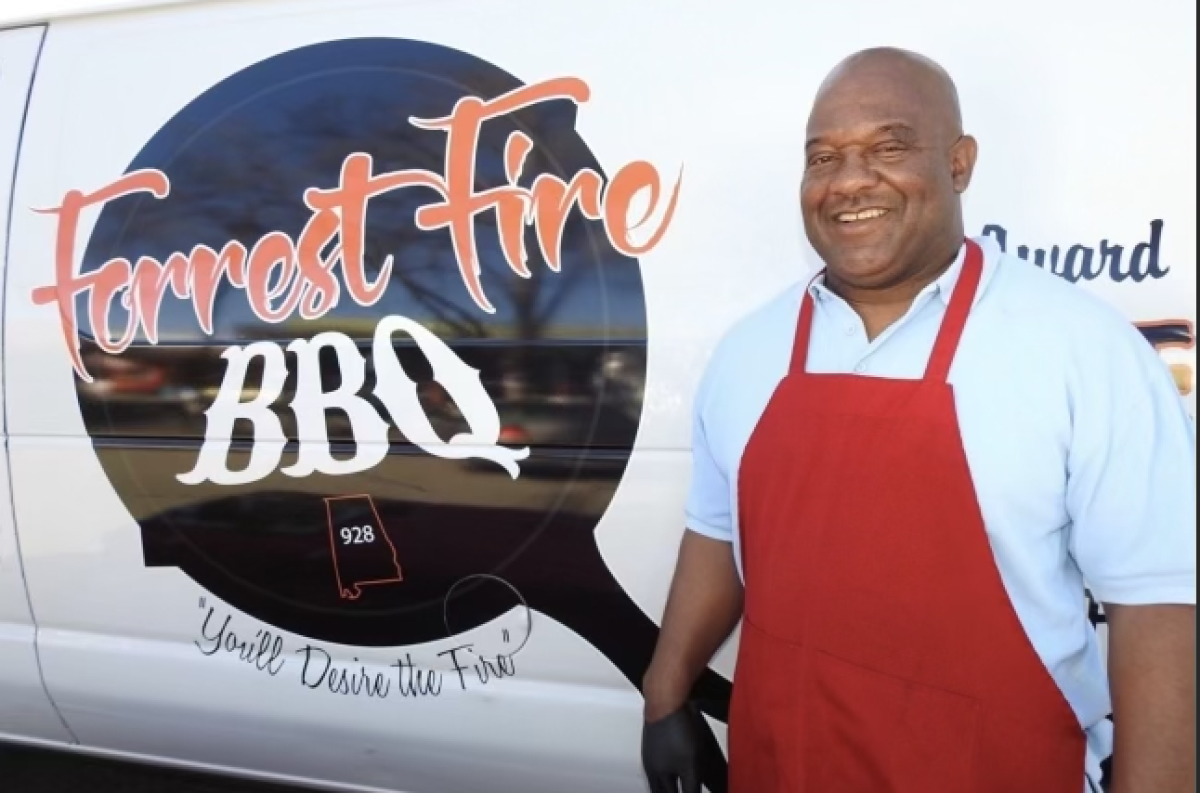Many students can’t imagine their teachers doing anything but teaching. Running into them at the mall or in San Francisco can be a shock. While some teachers at Redwood have dedicated their entire careers to this institution, others have taken divergent professional paths or must juggle two careers to afford living in the Bay Area. Three teachers explain how they aren’t simply defined by the subjects they teach and the classrooms they inhabit.
Richard Esteb: A Pathfinder
Straight out of high school, Applied Technology teacher Richard Esteb had no idea what he wanted to do with his life.
After taking classes sporadically at a junior college, he rejected the standard path of transitioning from high school to college to a career, and sought out an apprenticeship as a cabinet-maker to follow his passion for design. After completing his apprenticeship, Esteb became a journeyman and established his own business.
“The pressure here at school is for everyone to [follow this standard college path]. I’m not an advocate of that. Sometimes just finding your way in life works,” Esteb said.
Soon, Esteb found his way into architecture. His experience in cabinet-making led him to realize that he could improve designs of the houses in which he installed his cabinets.
After taking advice from a friend, Esteb enrolled in architecture classes at the University of New Mexico. After three years, he graduated, returned home and completed an internship in architecture.
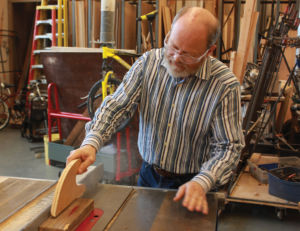
Since earning his license, Esteb has pursued design and residential architecture for almost 20 years.
“I feel like I’m an artist, designer, architect, builder, whatever,” Esteb said. “It’s just design I’m passionate about.”
In 2008, when the United States was hit with the devastating economic recession and housing downturn, Esteb struggled to find work in the field he loved. Luckily, that same year, he was offered a job to teach architecture and engineering at Redwood.
Eight years later, Esteb still enjoys teaching. By sharing his extensive first hand experience in design and craft, Esteb feels he can more effectively guide his students. He hopes to inspire them to pursue design in a variety of fields.
“I don’t teach architecture anticipating that all my students will become architects. But every year I get two or three or four of them who actually go into the design industry,” Esteb said.
This is what fuels his passion for teaching. Today, Esteb continues his design work and expects someday he’ll leave the classroom and return his full attention to a design practice.
Lindsey Kornfeld: A People Person
AP U.S. History and Government teacher by day and server at the Tiburon Tavern by night, Lindsey Kornfeld is one of the many Redwood teachers currently working two jobs. The high cost of living in the Bay Area is often not fulfilled by a single salary, leading many teachers to take on second jobs.
A Marin native, Kornfeld’s juggling of careers began while working in Edwards, Colorado as a snowboard instructor and a server/bar manager to cover additional expenses.
When she moved back to Marin in 2013, Kornfeld continued to work in the restaurant industry.
“It was what my experience led me to,” Kornfeld said. “I didn’t have to train for anything and I had the certification that I needed. For me, serving was an easy thing to continue: you can do it anywhere.”
As a server, Kornfeld loved meeting new people and hearing their stories. Two years later, interested in a new career as a teacher, she applied for a position in the TUHSD.
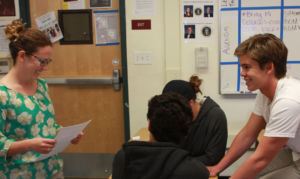
Since then, Kornfeld has concurrently taught at Redwood and served tables at the Tiburon Tavern. For her, these two careers influence and complement each other in ways one might not expect.
Twice a week, on days of her choosing, Kornfeld leaves school at 3:30 p.m., changes at the restaurant, and starts her shift at 4:00 p.m. She serves until about 10 p.m. Despite these long after-school hours at the restaurant, Kornfeld always puts her teaching first.
“My first priority is always my job at Redwood and grading and planning. Because I’ve been [at the Tavern] for four years, I send them my schedule every month, and so if I know that I’m giving a test the next day, it’s normally an easier day for me to work the night before because I won’t have as active of a mental day,” Kornfeld said.
When nights are quiet at the restaurant, Kornfeld will even bring papers to grade; the flexibility with her bosses at the Tavern makes her second job far more manageable.
There’s no doubt about it: working two jobs requires hard work and organization. It’s exhausting and late night shifts can make a long day of teaching challenging. Still, Kornfeld appreciates her serving job not only as an additional source of income, but also in the way it exercises a different part of her brain.
It has also improved her teaching; she continues to learn how to relate to different types of people.
“Both jobs are people jobs. I have served for many years in anything from a barbeque place to a five-star, really expensive, fine dining experience. Just being around different people, you learn different ways to approach students,” Kornfeld said.
For Kornfeld, it’s all about the people. Whether she’s helping table groups in her government class or serving tables at the Tavern, both jobs allow her to meet and connect with others.
Skip Lovelady: A Passionate Teacher
For many educators, Redwood is an ideal place to work. Whatever their motivation for teaching, they tend to stick around.
Skip Lovelady has taught at Redwood for 22 years. During his early years in the science department, Lovelady had options to go into other fields of work.
“I didn’t have to stay,” Lovelady said.
Lovelady believes in the mantra of pursuing your passion, so after every school year ended, he pondered whether teaching was right for him.
“Among all the hardships of those first couple years, there was enough pleasure and fun that I could see myself doing more—so I kept coming back,” Lovelady said. “I stopped questioning whether or not I was coming back after my fifth or sixth year.”
Over two decades later, Lovelady has ingrained himself in Redwood’s culture and his positive experience with students over the years has convinced him that his work here is meaningful.
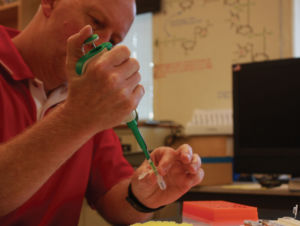
Seasoned teachers can have incredible impacts on their students. And while they have the potential to become quite formulaic after years on the job, Lovelady always finds a way to make it interesting.
“If I’m a first time NASCAR driver, I’m going to get the car around the lap. I’m not going to go 200 miles per hour at first, but I’m not going to crash either,” Lovelady said. “The car is going to be hard to handle and it’s going to be difficult on me. When I become a master NASCAR driver, it doesn’t make the racing any easier because I’m pushing the limit a lot more.”
The generational changes among students and curriculum changes by faculty throughout his 22 years at RHS enables Lovelady to continue to improve his teaching and learn from his students. He now notices nuances in his students and classes that younger teachers may not recognize.
“When you get more experienced with the job and you’re pretty good at it, you have all the basics handled. Then you are able to take those really hard challenges and meet them. The really hard stuff, like knowing when a student needs special attention, you don’t catch that until you’ve been around for a while,” Lovelady said.
Still, Lovelady feels having teachers cycle through a school is important.
“I think this is a business where we should go at some point. I would feel uncomfortable staying for 35, 36 or 37 years just because I want to or I like to,” Lovelady said. “I think I should leave and let a young teacher come in and have an impact on the school.”















